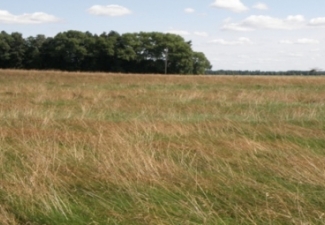Red fescue 'Vaive'

Species: Red fescue
Variety title: ‘Vaive’
|
Development: |
Developed by means of selection |
|
Pedigree: |
Initial title ’Priekuļu 45’ |
|
Maintainer and representative of selection breeders: |
Derived Public Person State Priekuļi Cereal Breeding Institute |
|
Authors of the variety: |
P. Pommers, A. Apinis, V Reķe |
|
Registered: |
Since 1959, the variety was zoned for cultivation in the territory of Latvia |
|
Morphological description:
|
Creeping short grass, quickly develops a stable turf in the stand, the plant has low demands to soil, good cold and drought tolerance, as well as good tolerance of acidic soils, due to low demands, it is suitable for growing in places, where demanding grasses fail to grow. |
|
Economic characteristics: |
Longevity 5 - 8 years. Winter hardiness – good Ripening - early, flowers in the first half of June Regrowth rate - good, provides 2 full hay harvests Productivity - dry matter productivity - 7-8t ha-1 |
|
Quality: |
Nutritive value - medium |
|
Susceptibility to diseases: |
Disease resistance - good. |
|
Use: |
Suitable for grass mixes in cultivated pastures, in mown meadows the red fescue falls behind other grasses in terms of productivity and nutritive value, however, due to its high hardiness, it can be grown in places that are unsuitable for more demanding cultures. Red fescue is sown for feed only in mixes with other perennial grasses. The most suitable components in mixes are red and white clover, meadow fescue, smooth brome and Kentucky bluegrass. |
|
Cultivation: |
Reproduces vegetatively with root shoots. Red fescue is not demanding to soil conditions. It surpasses other grasses in sandy soils with light granulometric content, which are more acidic and have lower content of nutrients. This fescue can be grown in peat soils and places that are subject to water erosion. Well prepared and processed soil is required for sowing, because the seedlings of red fescue develop slowly and cannot resist weeds. Weed control in early phases of development is the principal concern, especially, if it is sown without a cover crop. Fertilising is also important. |
|
For information: |
Baiba Ošmane |